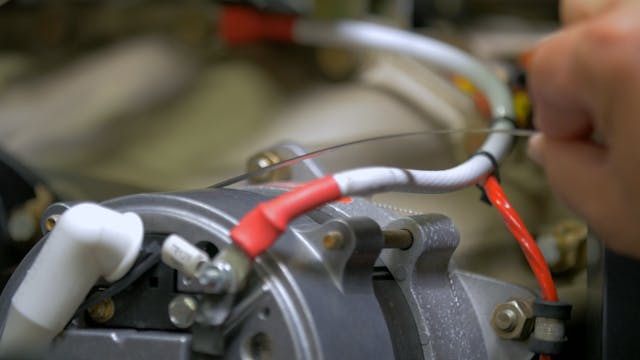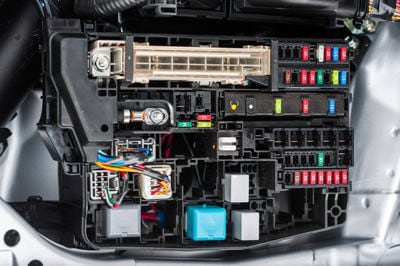Reliable regulatory compliance assistance services for peace of mind.
Top Tips for Effective Electrical System Troubleshooting
Repairing electrical systems requires a methodical technique, based in a comprehensive understanding of electrical principles and security protocols. By acquainting oneself with circuit components, using necessary tools, and sticking to an organized examination technique, professionals can effectively determine and deal with concerns. The nuances of effective troubleshooting prolong past simple technological understanding; understanding just how to document searchings for and focus on safety can dramatically influence end results. As we explore these important aspects further, it ends up being clear that grasping this process is not simply helpful yet important for success in the area.
Understand the Fundamentals
Understanding the basics of electric systems is important for reliable troubleshooting, as a strong foundation allows technicians to identify and settle problems more efficiently. A thorough grasp of electric concepts, such as voltage, present, resistance, and power, is crucial in determining the origin creates of issues. Voltage is the electric potential difference that drives present via a circuit, while resistance opposes the flow of existing, affecting the overall capability of the system.
Knowledge with circuit parts, consisting of resistors, capacitors, diodes, and switches, is likewise vital. Each component plays a distinctive role in circuit habits and can impact performance when malfunctioning. Additionally, recognizing series and identical circuit configurations is essential, as these plans affect the distribution of voltage and existing within the system.
In addition, expertise of safety protocols is vital. Specialists must know possible risks, such as shock and short circuits, to execute risk-free troubleshooting practices. By grasping these fundamental ideas, technicians enhance their capacity to perform effective diagnostics and repair services, ultimately causing boosted performance and integrity of electric systems. This foundational knowledge is the keystone of successful fixing undertakings.
Gather Necessary Equipment
Effective troubleshooting of electrical systems needs the best set of devices to identify and resolve concerns accurately. A well-equipped specialist can substantially improve performance and efficiency in identifying problems. Crucial devices consist of a multimeter, which measures voltage, present, and resistance, enabling precise examinations of electric parts. Clamp meters are likewise beneficial for gauging present without disconnecting the circuit, ensuring safety and convenience.
Additionally, insulated hand tools such as screwdrivers, pliers, and cord strippers are vital for securely adjusting electric connections. It is additionally suggested to have a circuit tester on hand to verify the presence of voltage in outlets and wires. For even more complex systems, a thermal imaging video camera can aid discover overheating elements, indicating possible failures.

Adhere To a Systematic Approach
Having collected the proper devices, the next step in repairing electrical systems is to adhere to an organized technique. A methodical technique makes sure that professionals can determine faults successfully and precisely, decreasing downtime and protecting against unneeded repair services.
Begin by examining the system's schematic layouts and specs. Understanding the layout and functional parameters will certainly provide context for identifying concerns. Next, separate the issue location by utilizing a procedure of elimination. This entails monitoring each element systematically, starting from the power resource and functioning go to this web-site towards the lots.
Utilize screening tools, such as multimeters and oscilloscopes, to gather unbiased information concerning voltage, current, and resistance at various points within the system. This empirical evidence will guide your troubleshooting initiatives and aid to verify or remove prospective reasons for failure.
Furthermore, think about environmental variables that might influence the system's performance, such as temperature level variations or wetness ingress. An Related Site extensive assessment of electrical wiring, connections, and parts will guarantee that all opportunities are represented.
File Your Findings
Complete documents is important in the troubleshooting process of electrical systems. Accurate documents enhance the performance of identifying repeating problems and assist in communication amongst employee. Each finding needs to be diligently noted, consisting of symptoms observed, tests conducted, and the end results of those examinations. electrical system troubleshooting. This method not only help in comprehending the source of the trouble however also offers as a reference for future repairing efforts.

Furthermore, preserving a log of parts changed or fixings done is invaluable. This information sustains supply administration and can help assess the long life and reliability of specific elements.
Inevitably, the documents procedure ought to be complete yet succinct, enabling simple retrieval and review - electrical system troubleshooting. By prioritizing comprehensive paperwork, professionals can produce a valuable data base that not just help in present troubleshooting but likewise empowers future upkeep initiatives, consequently improving more helpful hints total system dependability

Prioritize Security Actions
Acknowledging the integral dangers connected with electrical systems is vital for making sure safety and security during troubleshooting. Electrical shock, burns, and equipment damages are simply a few of the possible risks that professionals face. Prioritizing precaution is not only a legal commitment but also a moral important that safeguards both the service technician and the surrounding setting.
Before beginning any troubleshooting task, service technicians must put on proper personal protective devices (PPE), including protected handwear covers, security glasses, and flame-resistant apparel. Ensuring that the workspace is completely dry and devoid of clutter can substantially lower the threat of crashes. Furthermore, it is necessary to de-energize circuits prior to starting any type of work, confirming that they are not endure making use of a multimeter or voltage tester.
Developing clear communication procedures with team members is also important; this ensures that everybody understands prospective risks and the condition of the electrical system being worked with. Finally, having an emergency situation response plan in location can confirm invaluable in the occasion of a case. By prioritizing precaution, technicians can effectively minimize threats and foster a more secure work environment.
Conclusion
Reliable electrical system troubleshooting depends on a comprehensive understanding of fundamental principles and a systematic strategy. By collecting necessary tools, sticking to systematic assessment strategies, and carefully recording findings, the troubleshooting procedure comes to be a lot more effective and reputable. Focusing on security measures guarantees the well-being of people entailed and the stability of the electric system. Carrying out these strategies will boost the fixing experience, bring about quicker resolutions and improved functional effectiveness in electric systems.